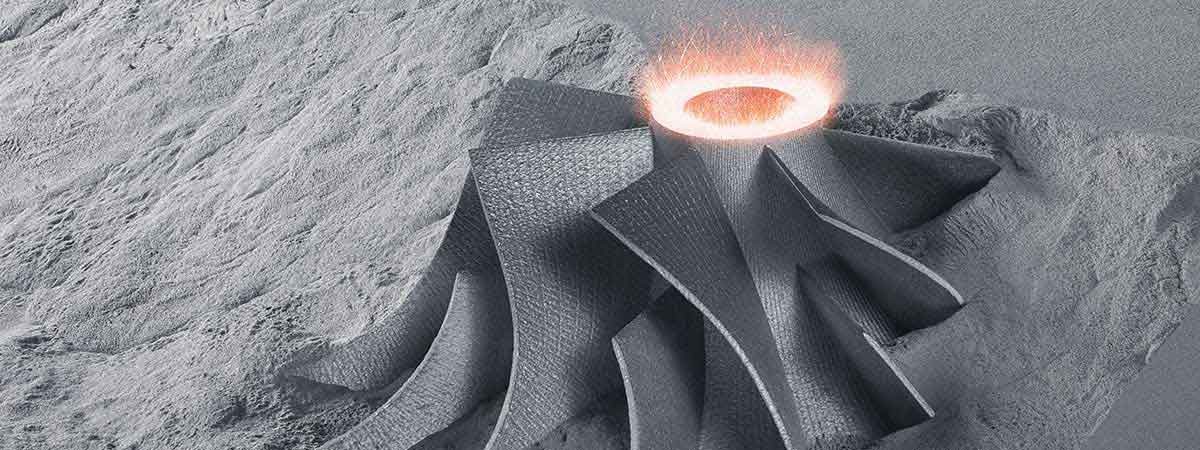Vacuum establishes environment for material purity
Metal powders are often manufactured using the VIGA process (vacuum induction melting with inert gas atomization). The starting metal is melted in a vacuum induction furnace. Vacuum ensures the degassing of the melt and thus the formation of a low-inclusion, high-purity metal. Busch offers various vacuum technologies for evacuating the furnaces.The liquefied material is then forced through a nozzle with an inert gas, for example argon, at high pressure. During this process, fine spherical drops are formed, which turn into powder particles when cooling down. Their spherical shape guarantees the fluidity of the powder and facilitates further processing.
Precision in the powder bed
There are now a whole range of methods for using metals in 3D printing. The powder bed process allows for the highest precision. In this process, the components are produced layer by layer in a metal powder bed, a container with a lowerable floor, by the targeted application of a metal powder layer with a thickness measured in µm.A computer-controlled laser or electron beam heats the fine-grained material. The focused melting of the powder particles produces the component as defined by CAD models. Solid structures are formed from the loose powder. When a layer is finished, the floor lowers. New powder is applied, with the next layer applied to the one below. Layer by layer, the workpiece is thus created. Thanks to the high precision of the laser and electron beams, post-processing is often no longer required.
Anti-collision, for stability
The electron beam consists of highly accelerated particles that are directed quickly and precisely through magnetic fields. Vacuum ensures that they do not collide with other particles on their way from the beam source to the workpiece. It can also be used to stabilize the workpiece being processed. A fixing force is applied to the powder particles by suction from below. This prevents the component from shifting during application of the new powder layers.Busch offers vacuum pumps optimally suited for the powder bed process.
